This week, VMware Cloud Formation 4.0, Tanzu, and vSphere 7 were thrust into the limelight with their release. Tanzu is a big deal as we discussed in our piece: VMware Tanzu Grasps for Next-gen Relevance. Along with the new features one would normally expect with new vSphere versions, such as improved vSAN performance, this update is different. VMware is embracing Kubernetes container infrastructure as a first-class citizen. For the enterprise market, the company is essentially saying to build on Kubernetes and VMware will help you managed in your data center or in whatever cloud you choose.
VMware Tanzu
While there are other parts of this release, let us be clear, Tanzu is the big one. It is a bit strange seeing Pat Gelsinger talk about Tanzu as the Swahili name for the woody part of the tree that usually splits off into branches. It feels a bit like the mid-to-late 1990s after the Lion King was released and there were a bunch of guys in the US who had never left their home towns yet were passionate about Swahili. I digress, maybe those are now the IT buyers VMware is targeting. Tanzu is VMware’s Kubernetes platform. Essentially, if you are an enterprise and want to build atop containers, and you do not want to go into the world of roll-your-own open source, VMware will help you run and manage your Kubernetes ecosystem.
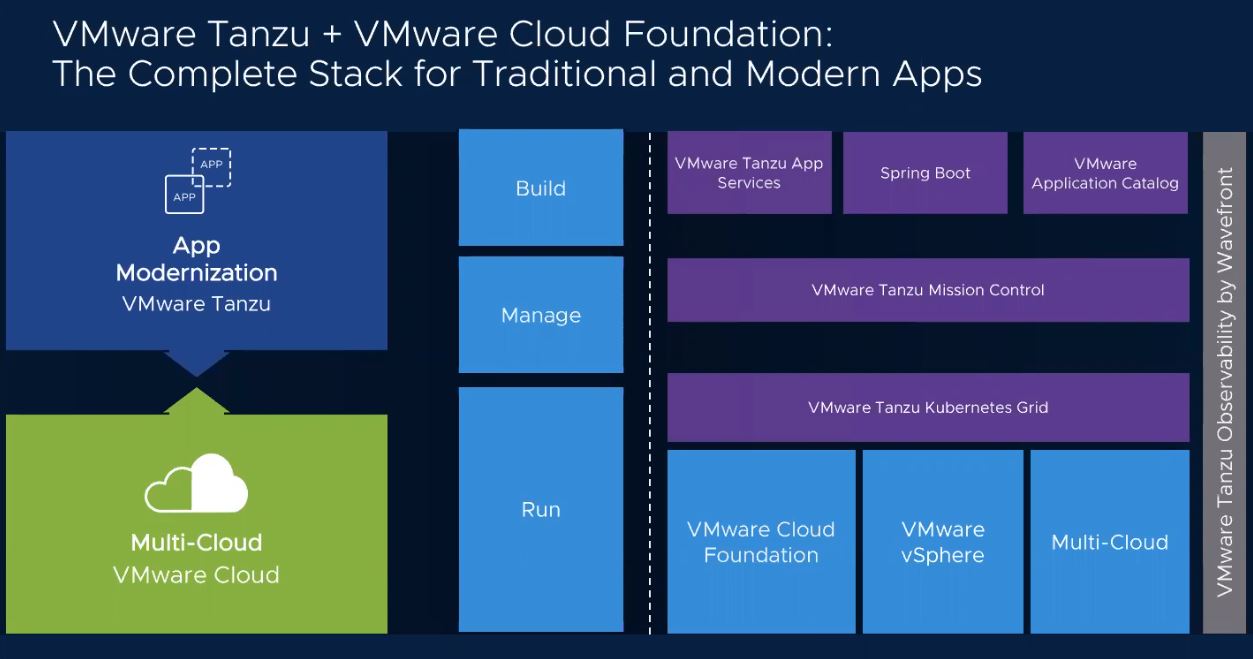
If you are a STH reader and want to get into Tanzu, your VMware rep will be reaching out and there are VMUG sessions that will get more into the details. We are going to talk high-level here. Tanzu has different components that will allow you to manage the lifecycle of containers across different environments.
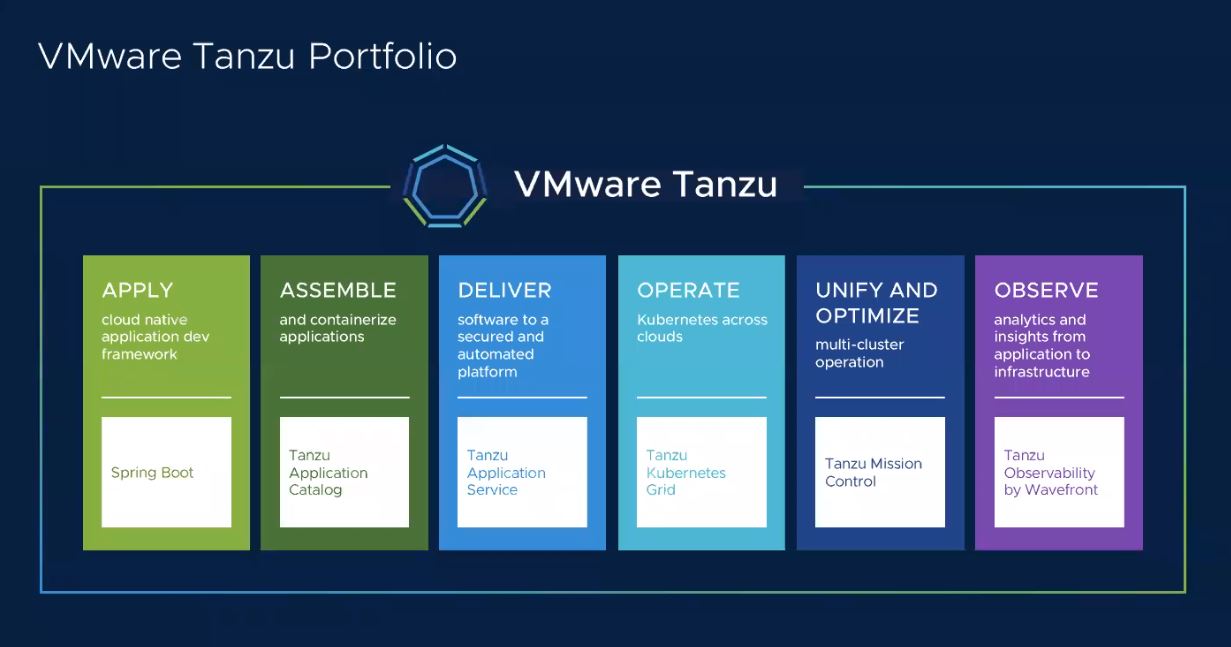
VMware is taking a page from the Docker Hub playbook and has an application catalog. The company will manage a set of container images that organizations can use to build their applications and components off. If you are seeing this as an early iteration of a Kubernetes app store for enterprise, that is essentially what it is with the ability to build and publish atop of it.
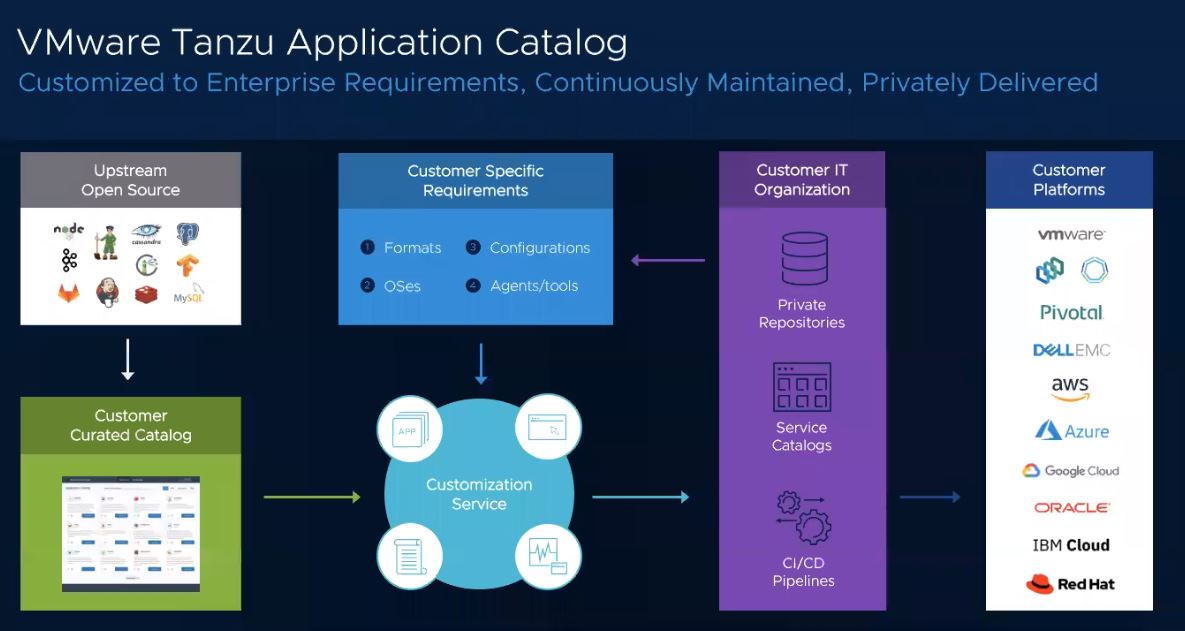
With VMware Tanzu Kubernetes Grid and Mission Control, VMware can help organizations deploy and manage Kubernetes container operations across not just their private VMware clusters, but also using public cloud services.
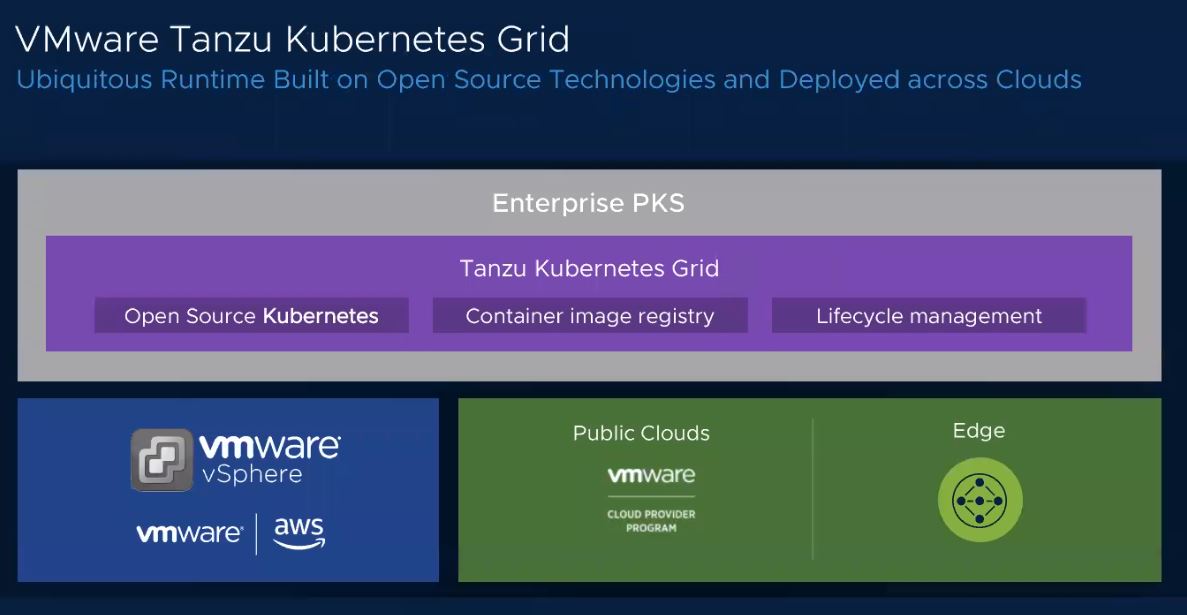
Underpinning this launch is also VMware vSphere 7 and Cloud Foundation 4. vSphere 7 will bring containers running on VMware ESXi hosts as first-class citizens. There are other changes with vSphere 7 such as improved GPU support for AI and ML.
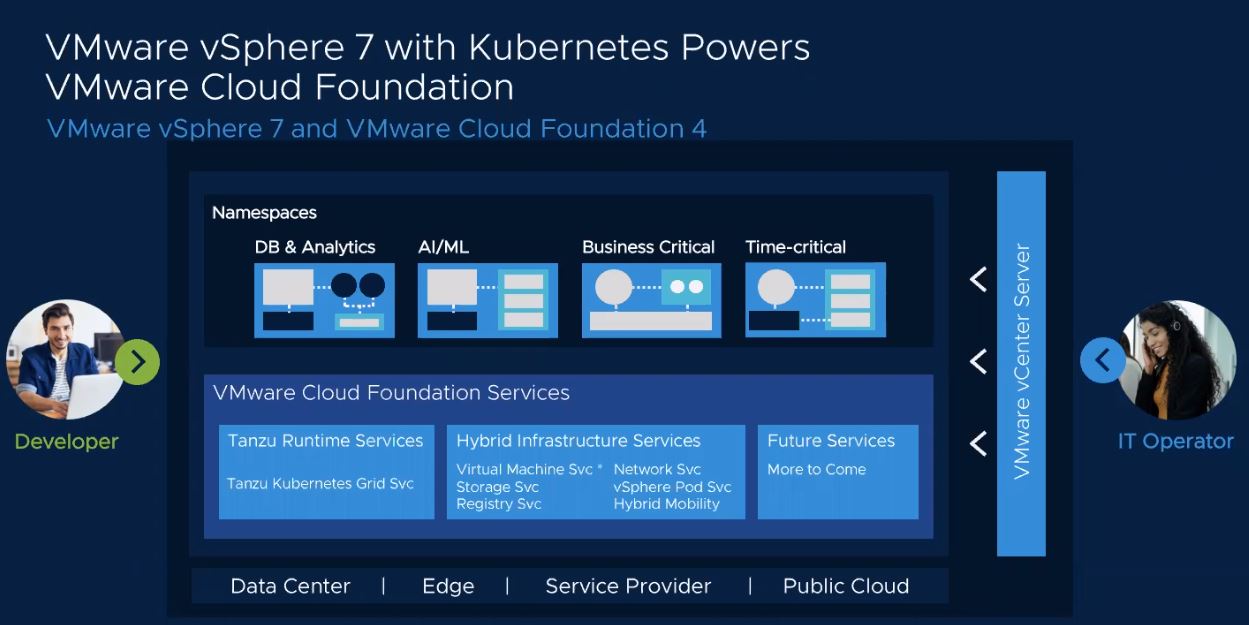
As part of the Tanzu initiative, VMware Cloud Foundation 4 brings even more functionality such as new performance gains in vSAN 7. NSX-T, VMware’s SDN play is an important component to managing these container operations across the different infrastructure in its service mesh.
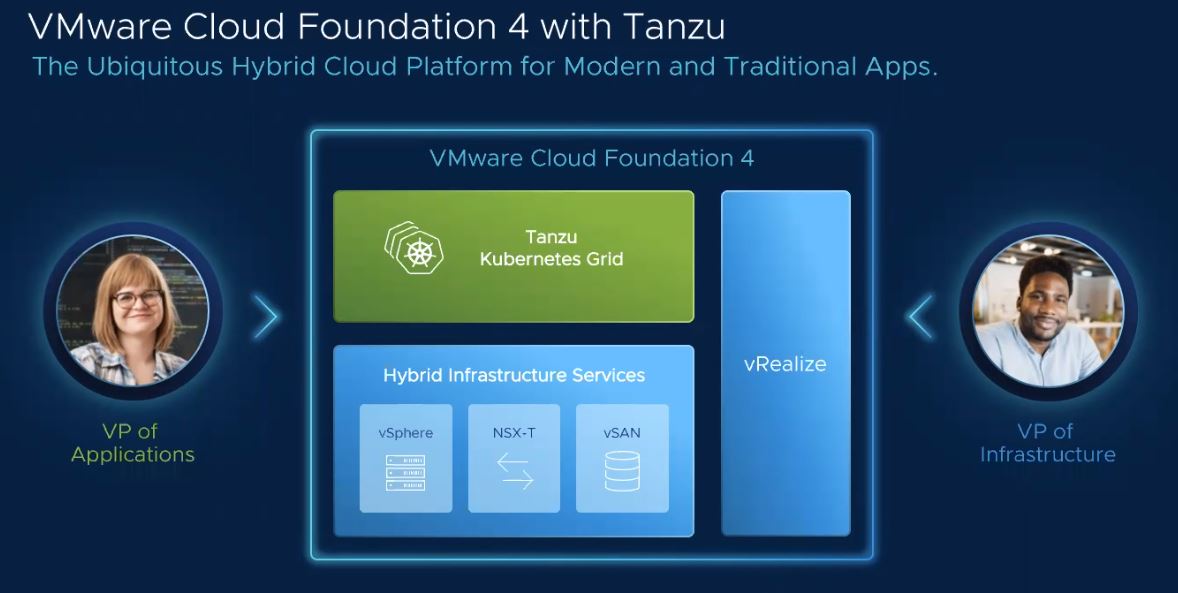
Initially, vSphere 7 with Kubernetes will be available solely through VMware Cloud Foundation so this is a big deal if you want to run containers.
Final Words
Now that VMware and Dell are tightly aligned, Dell also is putting out a wide range of solutions. Perhaps the most impactful will be the subscription pricing model it is offering the Dell Technologies Cloud Platform starting at $70/ node per day. It is also offering the new Tanzu platform with its hardware using its Dell Technologies On-Demand Consumption Model. Other vendors are following suit as well.
VMware desperately needed a Kubernetes story as it was quickly losing relevance beyond its existing zealous customer base. This launch is the first step towards that and the goal of keeping large enterprises on the VMware platform. As the world was moving to containers, VMware had a significant risk to its business but Tanzu seems to be a solid approach for helping the company’s customers live in a hybrid VM and container world.

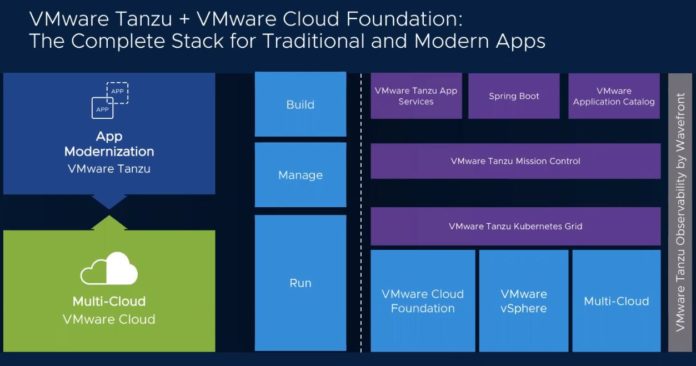


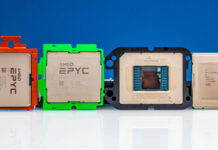
Great coverage thank you for making sense of this system – I feel luckier every VMWare launch day to have risked my personal investment for a ScaleMP test bed and my colleagues having adopted this technology for a indirect replacement. But obviously ScaleMP is a far cry from a all singing all dancing VMWare installation, and the weakness in me is forever sneaking looks at pastures distant enough from me they could be painted green with pinstripes before I was able to tell.
STH has to catch the scoop on HPEs “bare metal” hyper visor technology surely? May I inquire if you’re in process for a report from your labs about that?
Kioxia I daydreamed about yesterday: we are all comfortable with storage on our system busses now and I was thinking about how much we have to gain from incorporating buss control logic and latency hierarchy into different lines of NVM drives giving buss control to a Kioxia drive subsystem equipped with not only the common or garden SRAM/RAM/nvDIMM/low latency NAND tiers, but the most important connection in my thinking: shortest possible distance between the components.
I would like to be able to create a bitwise exact replica of my workspace storage.
We take professional pride in every object store and de duplicated copy in flight and at wire speed and we rejoice and celebrate our multi continental replicas and data oceans of adhoccery between them.
But I’m concerned that we throw away altogether too much valuable data from which we cannot ever gain insight of critical value whenever need arises .
How wonderful you must think this is, if you’re writing malicious software and you are so free to keep your prizes and your runtime across such vast unpoliced resource ranches!
How amazing is the convenience of capturing for your exclusive use , geo dispersed storage allocation for the copies of a remote branch whose access is required rarely and where lower budgets are vigilance have enabled you to obtain privileges for sending a masking checksum to distant filers making your global deposits untouchable